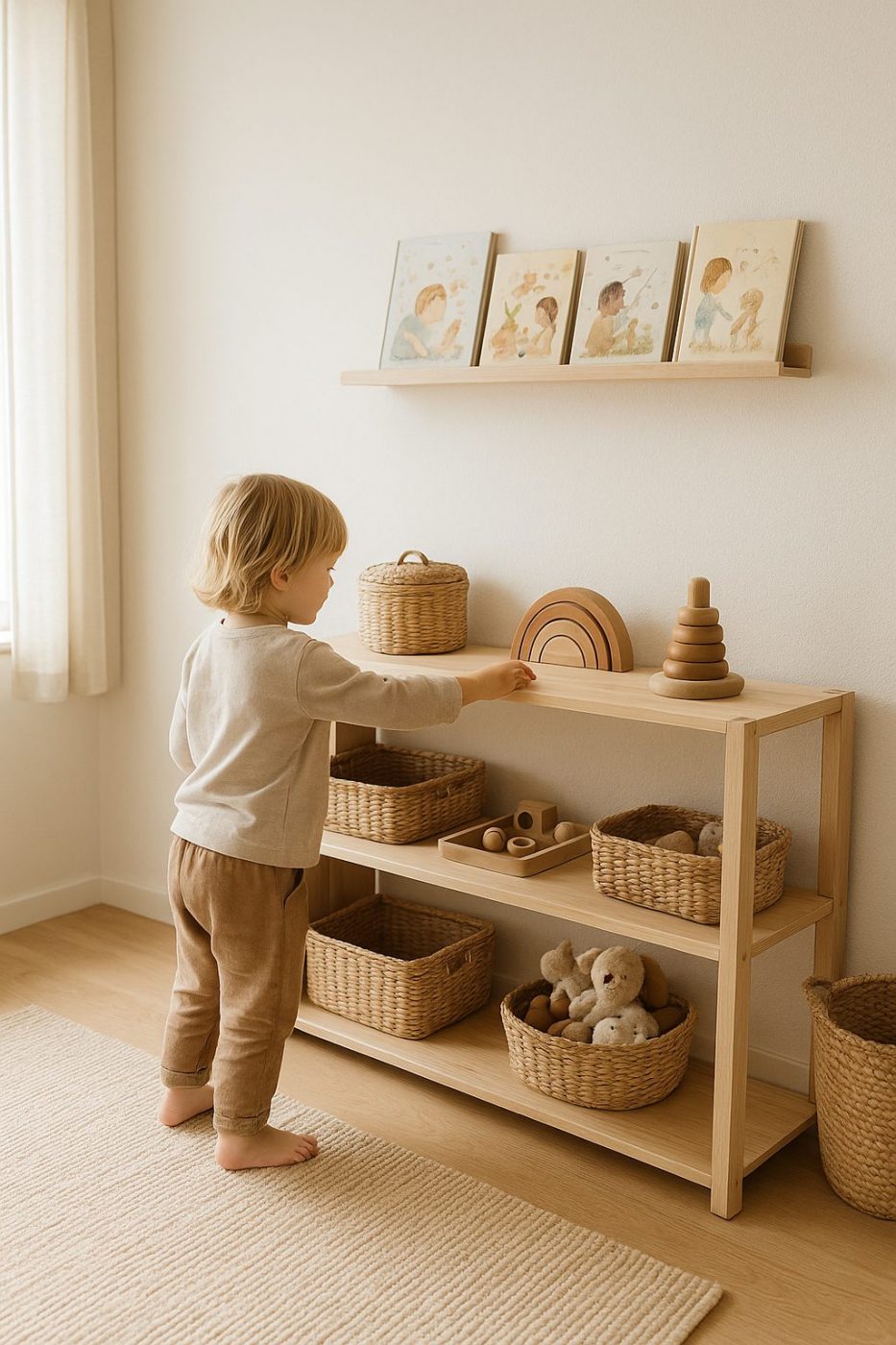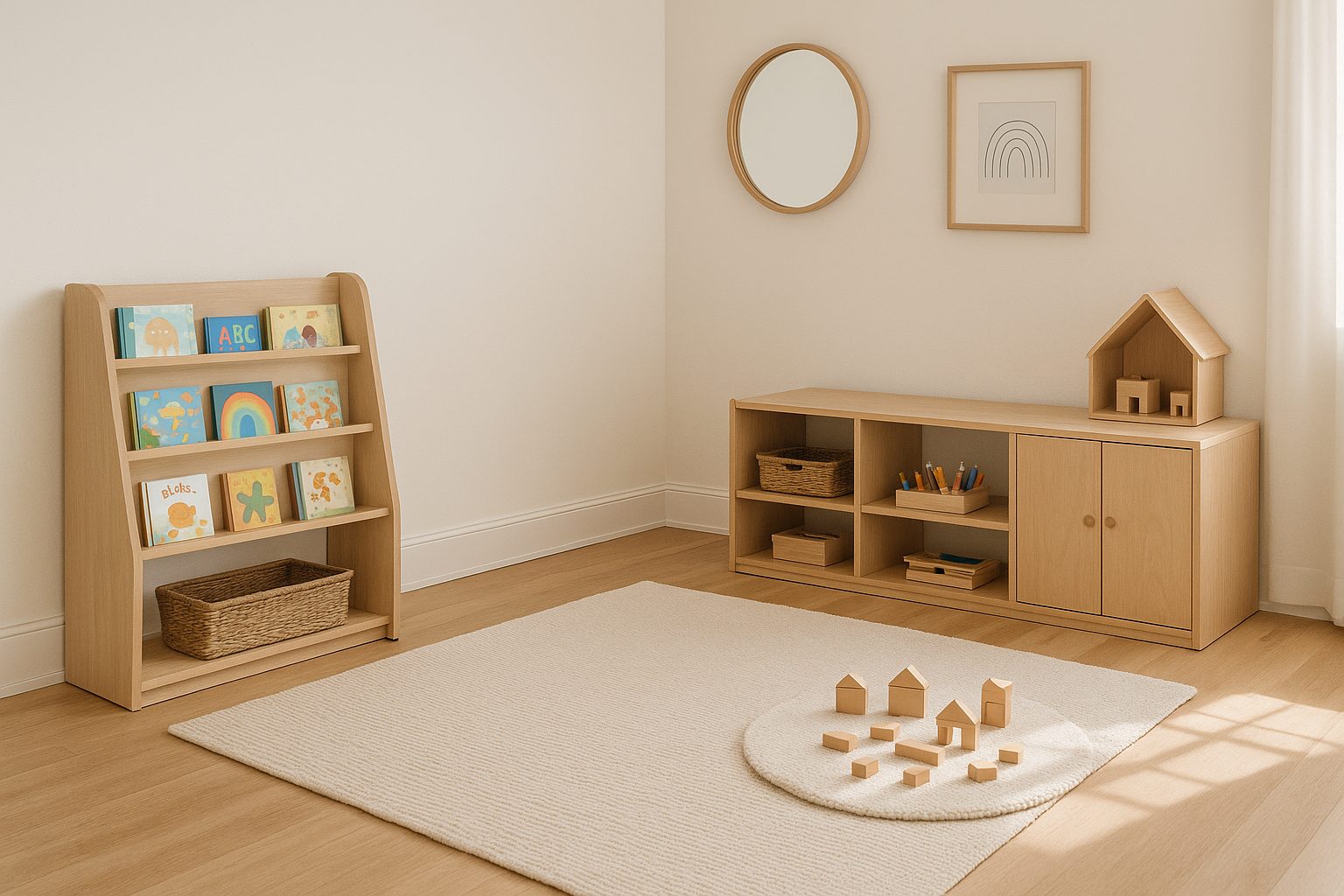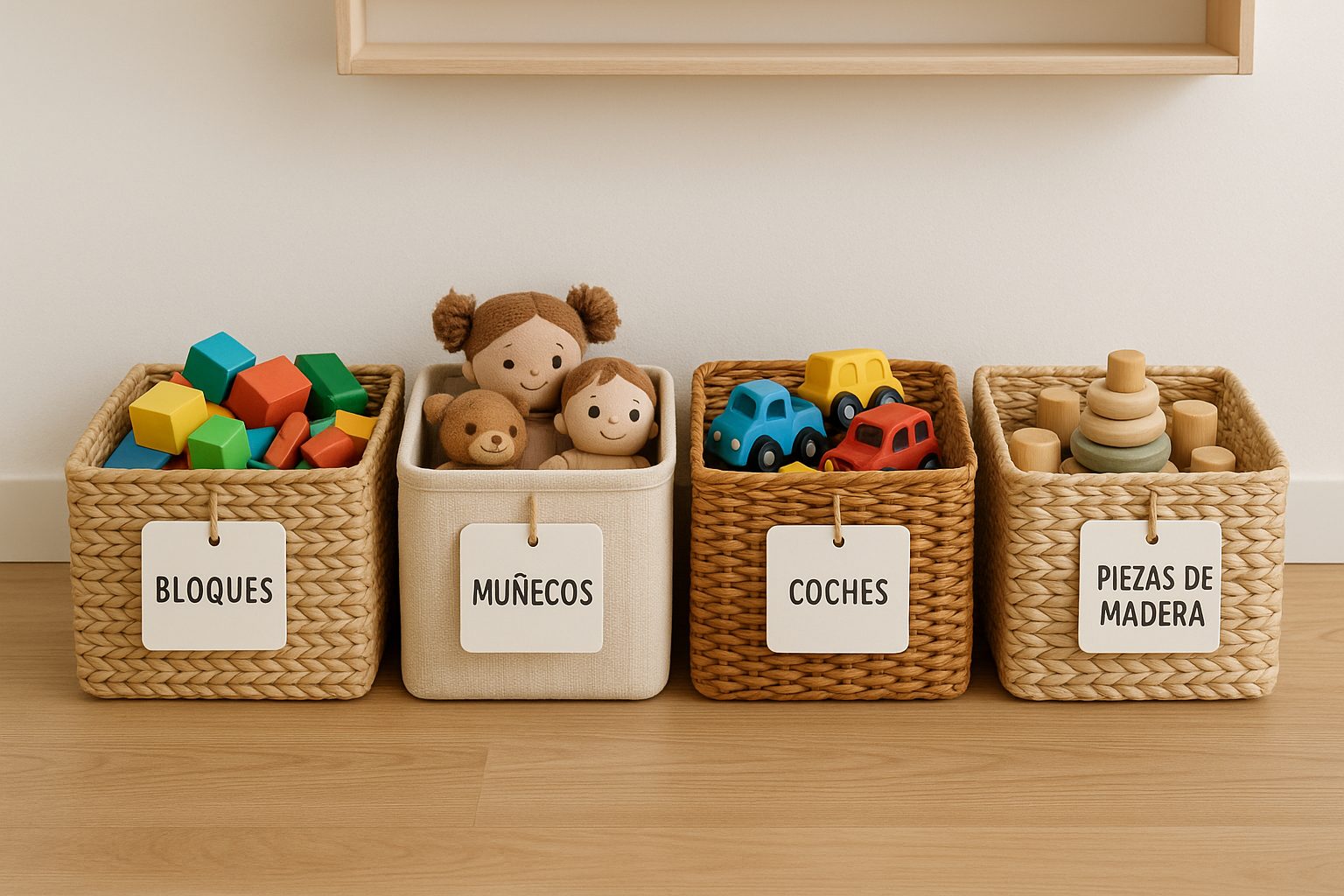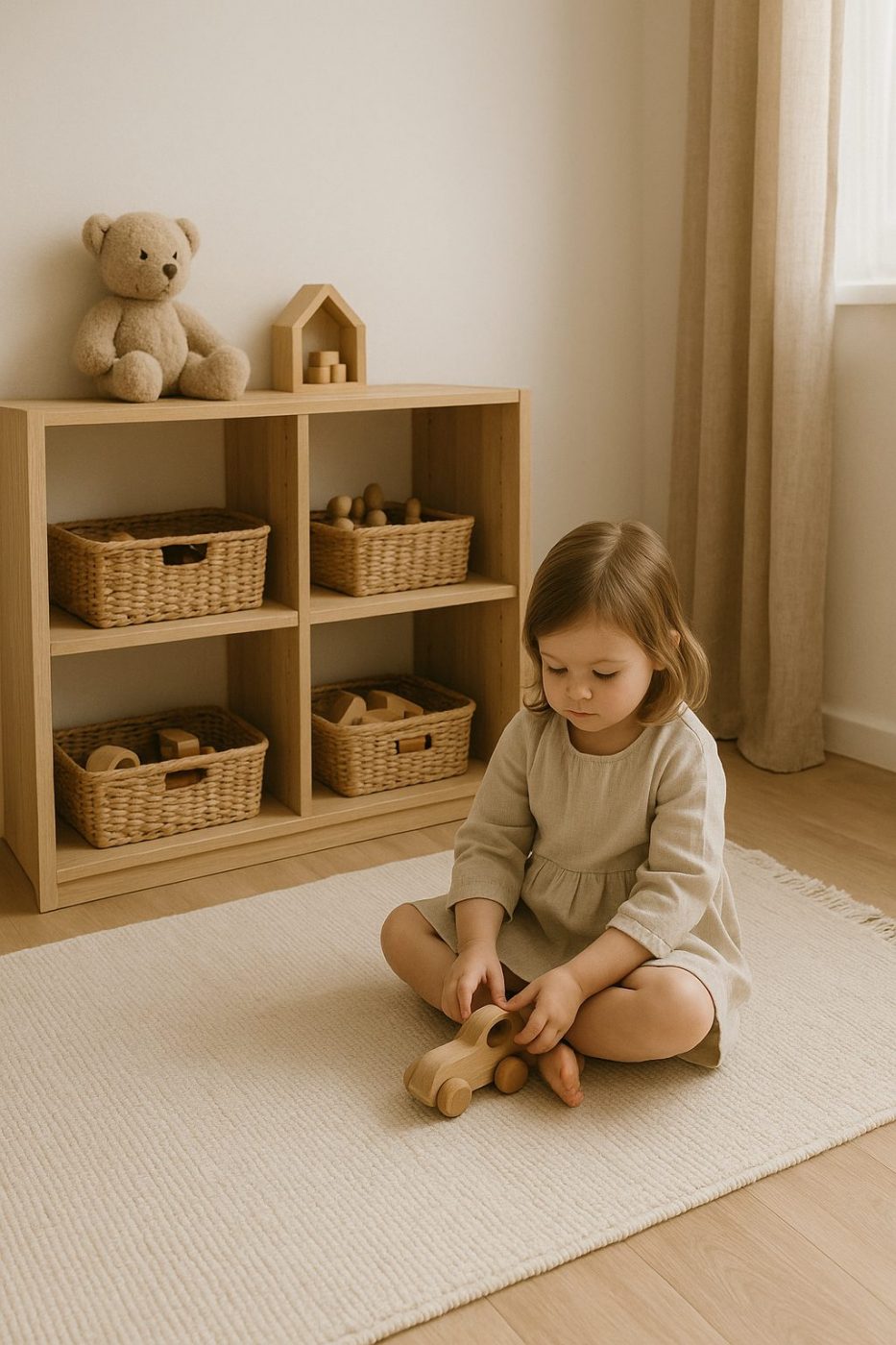Order not only improves home organisation but also supports children’s development. An organised space allows them to be more independent and responsible — key concepts of the Montessori approach. Below, we share some ideas to create an organised and accessible environment for children, using natural materials that promote harmony and well-being.
- Encourage autonomy with accessible furniture
The Montessori principle is based on giving children the opportunity to access their belongings independently. Low shelves, easy-to-open drawers, and boxes with visual labels are essential so they can see, choose, and store their items without constant help. Organisation at their height helps them feel responsible for their space.

2. Natural materials: sustainability and warmth
Choose natural materials such as wood, cotton, and linen. These are not only safer for children but also add a sense of warmth to the environment. Simple wooden furniture and fabric or wicker baskets are perfect for keeping toys organised and within reach.

3. Organise by zones: a place for everything
Dividing the space into specific areas helps maintain order. Toys, books, and art materials should each have their own easily identifiable and reachable place. Use open shelving for books and baskets or boxes for toys. Larger items like strollers can be stored in dedicated corners to avoid clutter.

4. Create a calming and stimulating environment
An organised space not only encourages independence but also creates a calm and stimulating atmosphere for children. By using soft colours and natural materials, you can create a peaceful environment that encourages both play and rest. Order also helps children enjoy their activities without distractions, developing concentration and creativity.

5. The Montessori method at home
Order is a key part of the Montessori philosophy. The “one toy out at a time” principle teaches children to focus on one activity and take care of their belongings. An organised space helps them internalise this habit and maintain order naturally.
Conclusion
Creating an organised and accessible environment for children is essential for their development. By following Montessori principles and using natural materials, we can foster autonomy, order, and creativity in the little ones while creating a harmonious and welcoming space for the whole family.